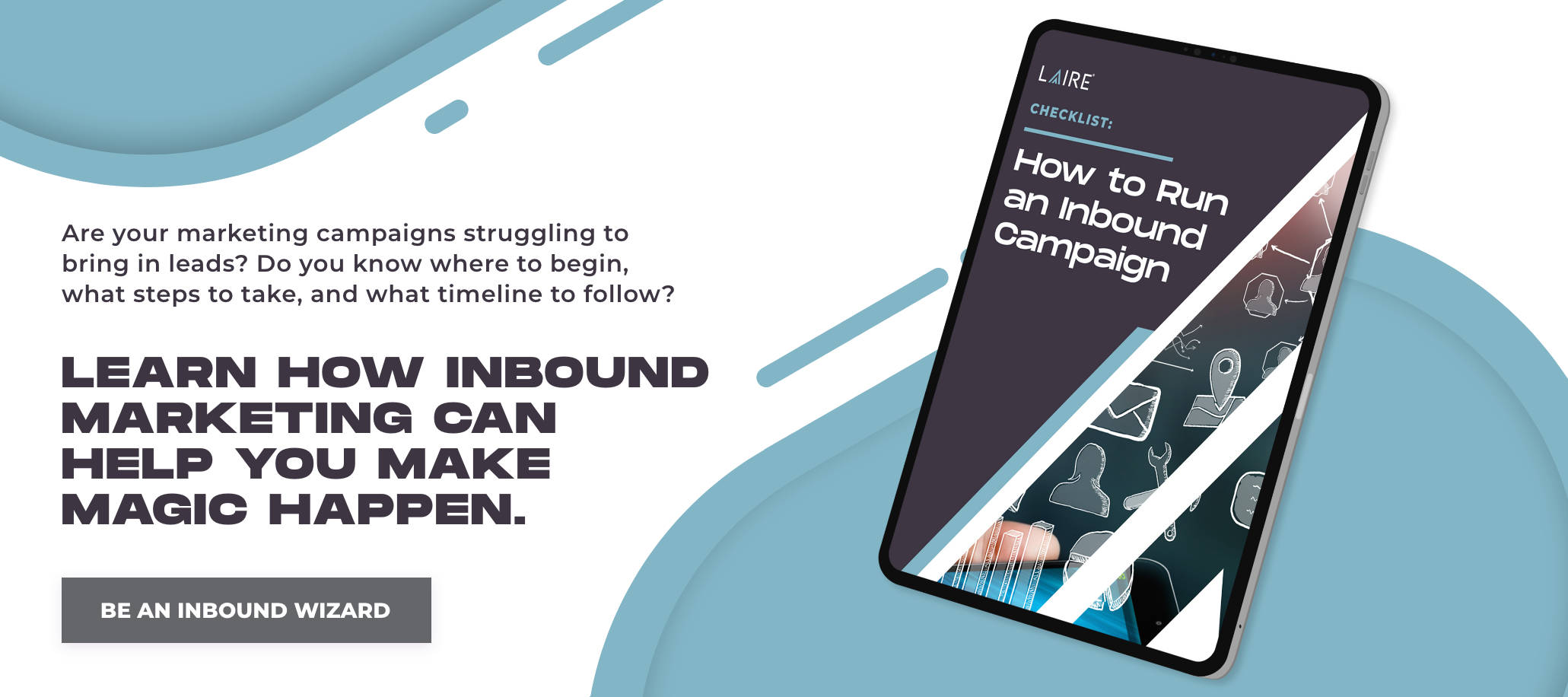Here’s the thing: Not everyone who expresses initial interest in your business’s product or service is ready to make a purchase right then and there. Sometimes, people visiting your website are just doing their research. Other times, they’re ready to invest.
Determining who is a website visitor and who is a potential lead is a crucial part of any sales strategy, but many businesses tend to overlook lead qualification in the sales process.
Successful lead generation is what every business wants. After all, it’s what converts a complete stranger into a loyal customer. First, however, it’s essential to weed out those leads that are unqualified.
What Is a Qualified Lead?
What makes a lead qualified? Unfortunately, there’s not one single qualified lead definition that applies to every business. To understand lead qualification, your marketing and sales teams need to be on the same page about what defining factors make someone a true lead.

Not all leads generated are going to result in potential sales down the road, so marketing and sales teams must work together to make sure these potential leads are handled appropriately.
Common signs that you’re dealing with an unqualified lead include:
- The lead has not been nurtured enough to close the sales cycle.
- They are often unsure of exactly what your company has to offer.
- They aren’t aware that they’re looking for a solution to their problem yet.
- Your product or service is out of their budget.
- They don’t have the authority to make a purchasing decision.
While it’s possible to convert unqualified leads into future customers, it can be a laborious process that won’t necessarily fit your existing lead generation and sales processes. And it can result in a lot of hard work with little to no end results.
A qualified lead is typically easier to identify because:
- They have completed or are in the process of completing your business’s nurture campaign cycle.
- They have conducted their own research to better understand their problem and can see how your product or service is a viable solution.
- Their budget is clearly defined and they have found your offering to fit within what they’re able to afford.
- They are in control of their budget and have the authority to make purchasing decisions.
Customers who come from qualified leads typically have low churn rates because they close on their own terms. But within your list of qualified leads, you’re still going to find that some are “better” than others.
Identifying a Marketing Qualified Lead vs Sales Qualified Lead
Now that you’ve removed any unqualified contacts from your leads list, it’s time to pare down the list even further.
What Is a Marketing Qualified Lead?

A marketing qualified lead (MQL) is someone who has indicated an interest in your business’s offerings based on a marketing effort. This can be anything from submitting their contact information on a form, opting into a newsletter subscription, downloading marketing materials or resources, or repeatedly visiting your website.
An MQL has shown their initial interest in buying by taking that first step to engage with your company without making a financial commitment. They’re curious — but they’re not a sales qualified lead (SQL) yet. There’s no guarantee of a sale, but they’ve shown they may be interested down the road.
Marketing qualified leads need continual nurturing to push them toward a conversion. Marketing automation, such as email campaigns, demo opportunities, and free trials, helps to educate the lead about your company and its offerings, keeping you top of mind while building brand trust.
What Is a Sales Qualified Lead?
An SQL is the most valuable lead for any business because this individual is in a position to make a purchase. In many instances, they’ve indicated their budget information and expressed a desire to speak with the sales team.
There’s a heightened level of interest; sales qualified leads have requested a demo or formal quote and have indicated their purchasing time frame and intent to buy.
How to Qualify Leads
The lead qualification process is simple once you break it down. It starts with the marketing team making a list of all the leads who visited and engaged with your website. From there, you can determine the qualified leads from the unqualified leads.
Now, within the qualified leads list, it’s time to figure out who is an MQL versus an SQL. Once you’ve done that, your sales team can prioritize their conversations and address those high-value SQLs immediately.
Meanwhile, MQLs should enter the lead nurturing process to stay warm until they convert to an SQL.
Questions to Qualify a Lead
Qualifying leads is crucial for ensuring you invest your time and resources effectively. Here are some lead-qualifying questions to help you do just that:
- What is your budget for this project?
- What is your timeline for making a decision?
- What specific challenges or pain points are you experiencing?
- What solutions have you tried in the past?
- Who are the decision-makers involved in this process?
- What are your expectations from our product/service?
- Have you worked with a similar product/service provider before?
- What criteria are you using to evaluate potential solutions?
- What is your company size and industry?
- Are there any other stakeholders we should involve in this discussion?
These questions will help you qualify leads effectively and focus your efforts on those with the highest likelihood of conversion.
Starting Your Qualified Lead Generation Process
Just like your sales cycle process, it’s important to understand exactly who your ideal lead is — and who it isn’t.
Start by brainstorming your ideal buyer persona. Investigate their demographic data, note their buying behaviors and habits, and better understand their priorities when it comes to solving the particular issue your product or service addresses.
Not sure where to start with creating a persona? Here's a free generator from HubSpot.

It’s also important to incorporate an element of customer feedback into your lead generation process. This will help your team to pinpoint areas of the process that have and haven’t worked with potential leads in the past.
Look for recurring trends and re-evaluate if your website and marketing content are doing their jobs in curating potential leads. Does your website have marketing content that can be consumed at each stage in the sales process?
For example, is there a form or downloadable piece of content for new website visitors to request to learn more about what your organization does or sells? And once they’ve received that piece of content, does their information get entered into a lead nurturing process (i.e., an automated email campaign) as they get to know your business’s offerings better over time?
When it comes to mapping out the lead generation process, both the sales team and the marketing team must work together to set and define the individual parameters for lead qualification.
Leads will look different for every business model, so work together to figure out which prospects can be converted to SQLs for immediate attention versus MQLs who will need to enter a lead nurturing process before they are ready for conversion.
It’s also important to involve your customer service team as they will provide a unique perspective on churn rates and their correlation to the feedback they’ve received from potential leads and customers.
One of the most important things you can do is to revisit this topic on a regular basis to redefine what a high-value lead looks like to your organization. As business ebbs and flows, your team grows, and your business model shifts, it’s crucial to re-evaluate the lead generation process and update your internal lead definitions.
Frequently Asked Questions About Lead Qualification
What are qualified leads?
Qualified leads are prospects who have been assessed and deemed more likely to become customers based on specific criteria or behaviors. These criteria often include factors such as demographic information, engagement level, fit with the product or service, and readiness to purchase.
Qualified leads have typically demonstrated interest, intent, or need for the product or service and have progressed further along the sales funnel compared to other leads. They are considered valuable because they have a higher likelihood of converting into paying customers, making them a priority for sales and marketing efforts.
What does “product qualified lead” mean?
While not used as frequently as MQL or SQL, product qualified leads (PQLs) are a type of lead that has demonstrated a strong interest or intent to purchase a specific product or service based on their interactions with that product or service.
Unlike traditional leads, which are often based solely on demographic or firmographic data, PQLs are identified based on their behavior or engagement with the product.
How do chatbots qualify leads?
Chatbots qualify leads through a combination of pre-programmed logic, natural language processing (NLP), and data collection. They can:
- Initiate conversations with users
- Ask qualifying questions to determine interest and fit for the product or service
- Analyze user behavior for engagement and intent indicators
- Integrate with customer relationship management (CRM) systems to access past data
- Assign lead scores or categories based on qualification status
Once leads reach a certain threshold, chatbots may hand them off to the sales team for further engagement. This automation streamlines sales and marketing efforts, improving efficiency and delivering a seamless and personalized experience for users.
Simplify Lead Generation and Qualification With Automation
One of the best things you can do for your business’s lead generation efforts is to automate it as much as possible. Thanks to innovative marketing automation software like HubSpot that acts as an all-in-one marketing, sales, and service solution, both your marketing and sales teams can work together seamlessly within the same system.
HubSpot’s intuitive workflow solutions make the lead generation and nurturing processes as clean, efficient, and effective as possible thanks to targeted email campaigns, trigger notifications, and customizable workflows.
Not only does the HubSpot platform make lead generation, nurturing, and management easy for your marketing department to deploy, but it also has its own set of sales enablement tools that will help your sales department convert those leads into real revenue.
Worried about implementing something new? Work with a HubSpot agency like LAIRE to reimagine the lead generation process and implement the latest tools to help your sales and marketing teams do what they do best.


